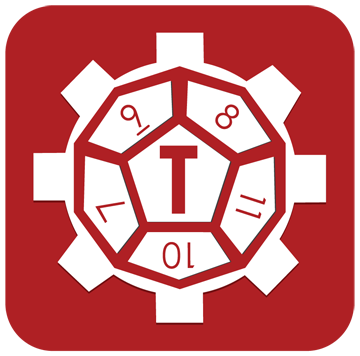Dime Adventures: Danger & Excitement!
Posted by
Thorin Tabor
on Nov. 6, 2016, 4:26 p.m.
A few weeks ago I posted the first two installments in a series of game design articles about our upcoming pulp alternate history RPG, Dime Adventures. Today I am continuing the series by taking a closer look at how the game handles the danger and excitement of combat, as well as the resulting recovery period.
To begin this article, let me start by making a simple assertion:
Pulp is the genre of heroic, over-the-top action in its rawest form.
That is, in pulp adventures it doesn’t matter it doesn’t matter if you steal bits and pieces of other genres. Take the bits you like and have at it! The pulps were filled with all sorts of genre-bending fiction, from adventures on Mars, to globe-trotting action, to cosmic horror, to fantasy worlds. What all these disparate tales had in common is a sense of heroism—of the conflict of right and wrong, good and evil—and a sense of high-flying Action, with a capital A.
Want to steal Count Dracula out of Victorian fiction? No problem! Throw Dracula into the mix and then punch him in the vampiric face!
When I sat down to design the Dime Adventures combat system, I wanted to capture that same sort of high-spirited action, so I outlined my design goals:
- Combats should be fast. They shouldn’t bog down with dry technical details that would take away from the feeling of high-spirited adventure.
- Combats should be dynamic. The situation should be able to change from round-to-round. They shouldn’t become predictable, repeated slug-fests.
- Combats should feel dangerous and exciting, but in a way that highlights their over-the-top nature rather than in a way that would make them feel gritty.
One of the most important questions to answer when designing any RPG combat system is: How many hits does it take (on average) to drop an opponent? This not only has an effect on how long combats take to play out, but it also has a huge effect on decision-making in the combat system.
Let me give an example: If I can take 10 hits before I drop, then I can easily afford to risk one or two hits in order to try something risky or to make a prolonged decision about the battle. Each hit doesn’t mean much, and so the stakes remain low until the last few hits.
On the other end of the spectrum, if it only takes one hit to drop me, combat is very dangerous for me. I would hesitate to start it unless I was convinced that I stood a good chance at either dropping my opponents before they could counterattack, or avoiding whatever attack they threw at me.
Deciding how many hits the average character can withstand then involves a trade-off. Too many hits and the combat loses its sense of danger as well as its speed, too few and it loses its sense of action and dynamism. Also keep in mind that the number of hits can be different between PCs and NPCs. It’s quite fitting for a pulp hero to be able take out a henchman with one punch. The inverse, however, isn’t true.
In the end, I decided that minions and most NPCs should drop with a successful hit or two. PCs, on the other hand, as well as major villains, should take about four successful hits.
I also wanted it to be exciting and somewhat unpredictable exactly when major characters would drop. I decided to go with a system where heroes and villains don’t risk dropping until they hit 0 health, and even then every hit only increases the chances they they drop, rather than being a guarantee. This gives a sense of excitement as the character makes an action versus unconsciousness or death. It also means that abilities or other events can key off of a character reaching 0 health—the rough halfway point in the hero/villain death spiral—adding to the dynamism of a battle.
Next my thoughts turned to recovery. It would be realistic for a character beaten half to death to take a while to recover. Broken ribs aren’t negligible, after all. But this didn’t really fit the feeling of the pulp genre, where heroes might take a serious beating, but at the end of they day they soldier on to defeat the villains.
Instead I decided that healing should be comparatively quick. This also promotes a sense of dynamism, as the situation can change from being beaten down to healed up with some first aid and a night’s rest.
These decisions in mind, I began to hash out the details.
Stay tuned for more Dime Adventures design posts in the coming weeks. Meanwhile, you can check out an open playtest of the game here!
Share Post
 Tab Creations
Tab Creations
0 Comments on Dime Adventures: Danger & Excitement!
There are currently no comments
New Comment